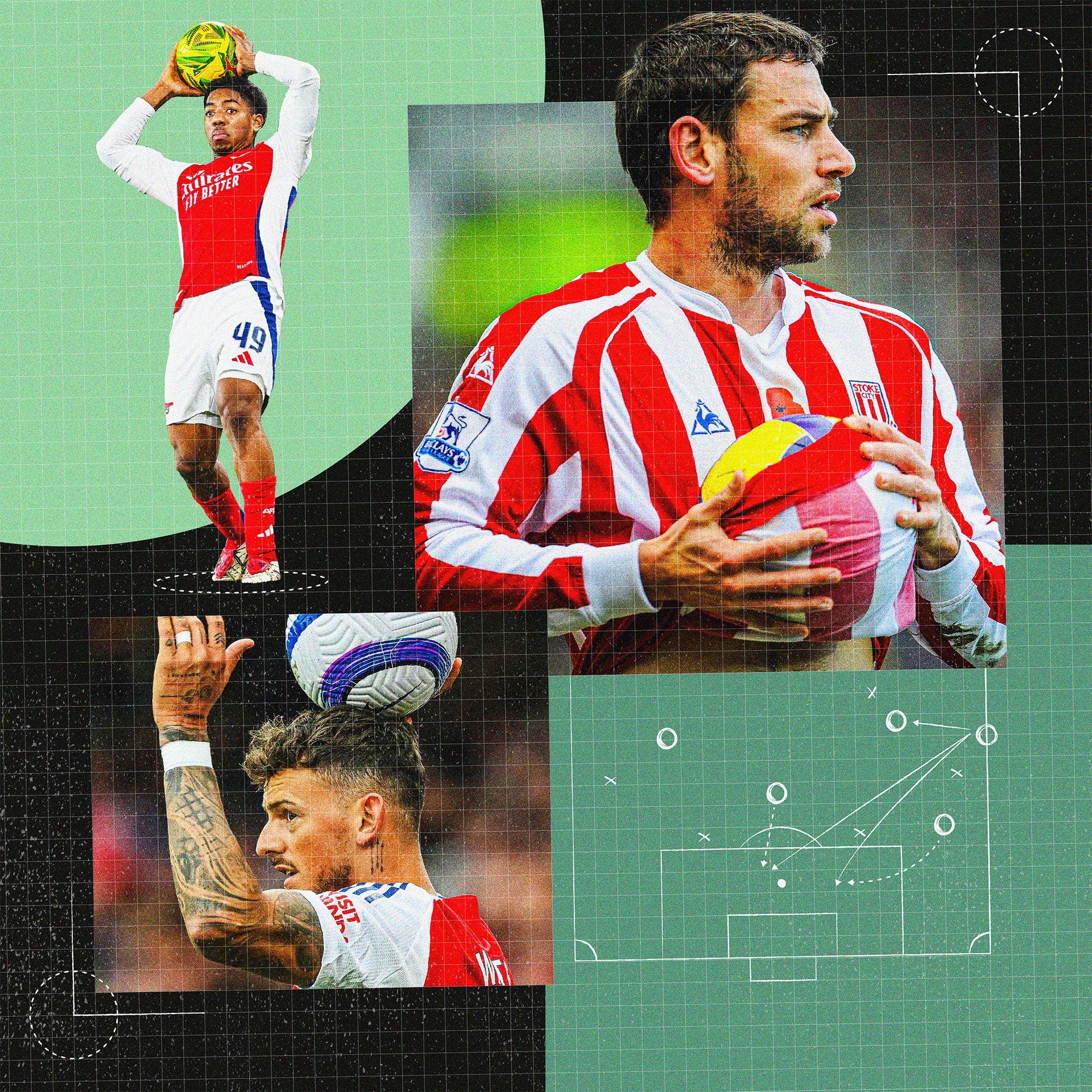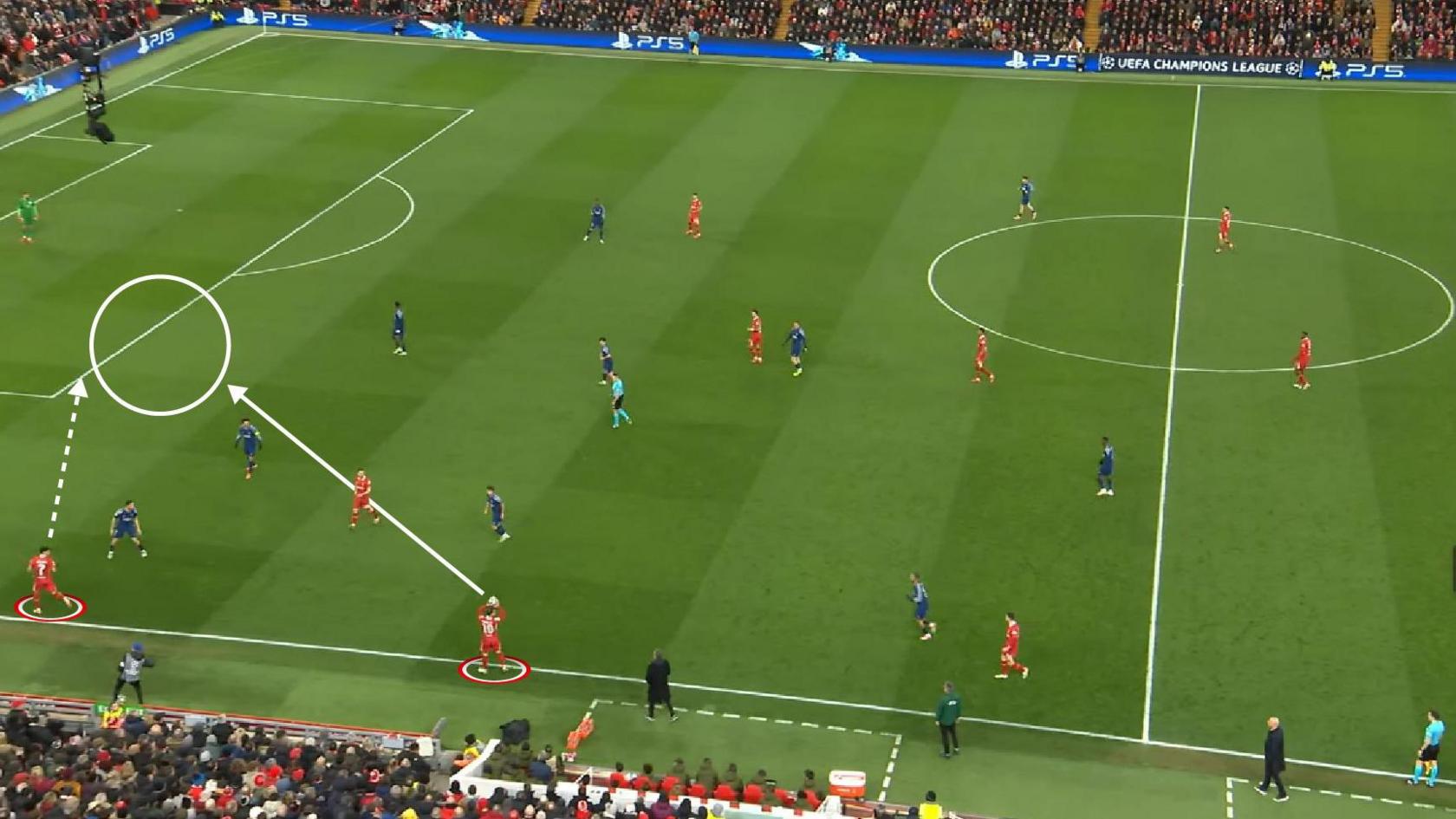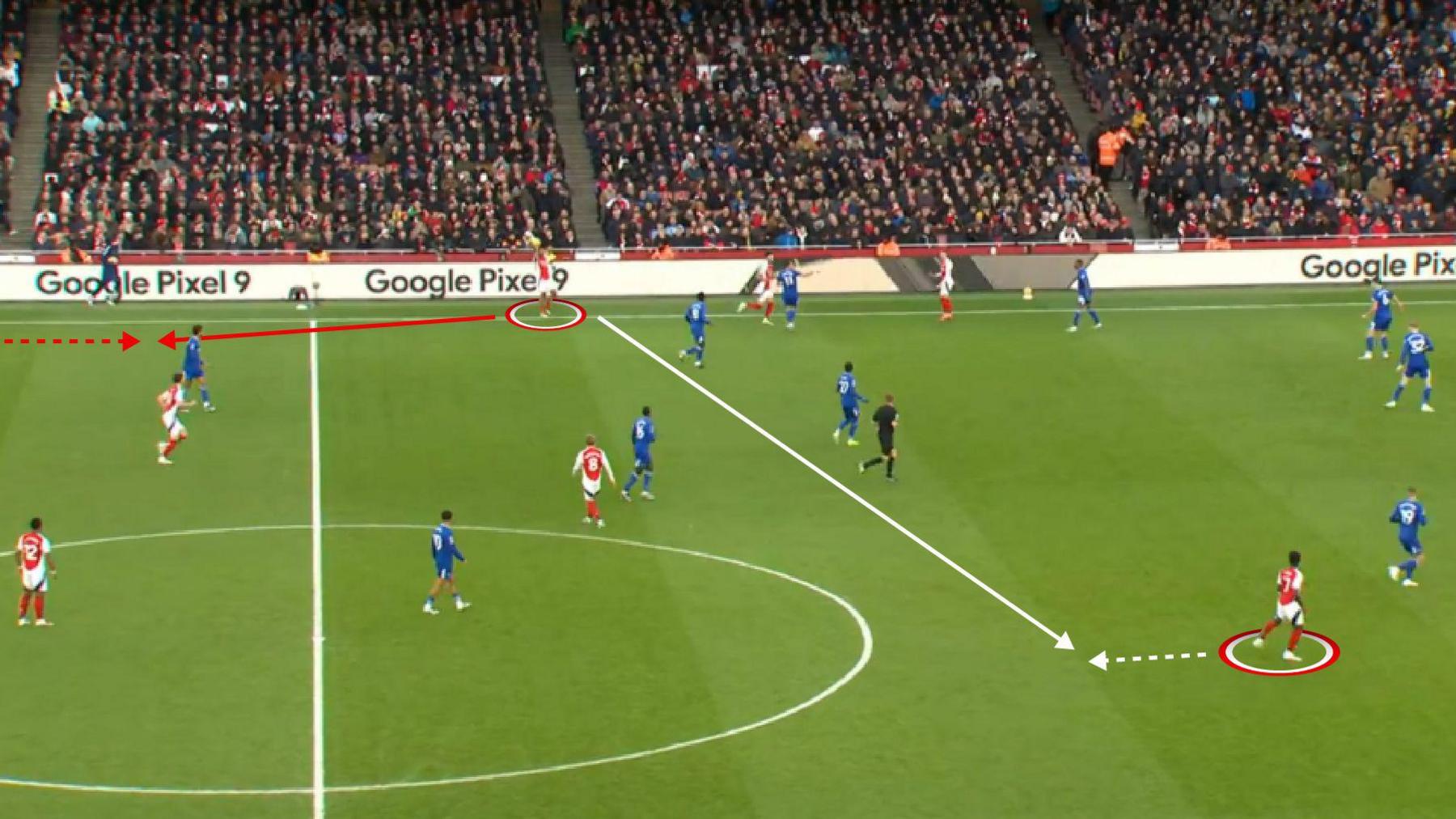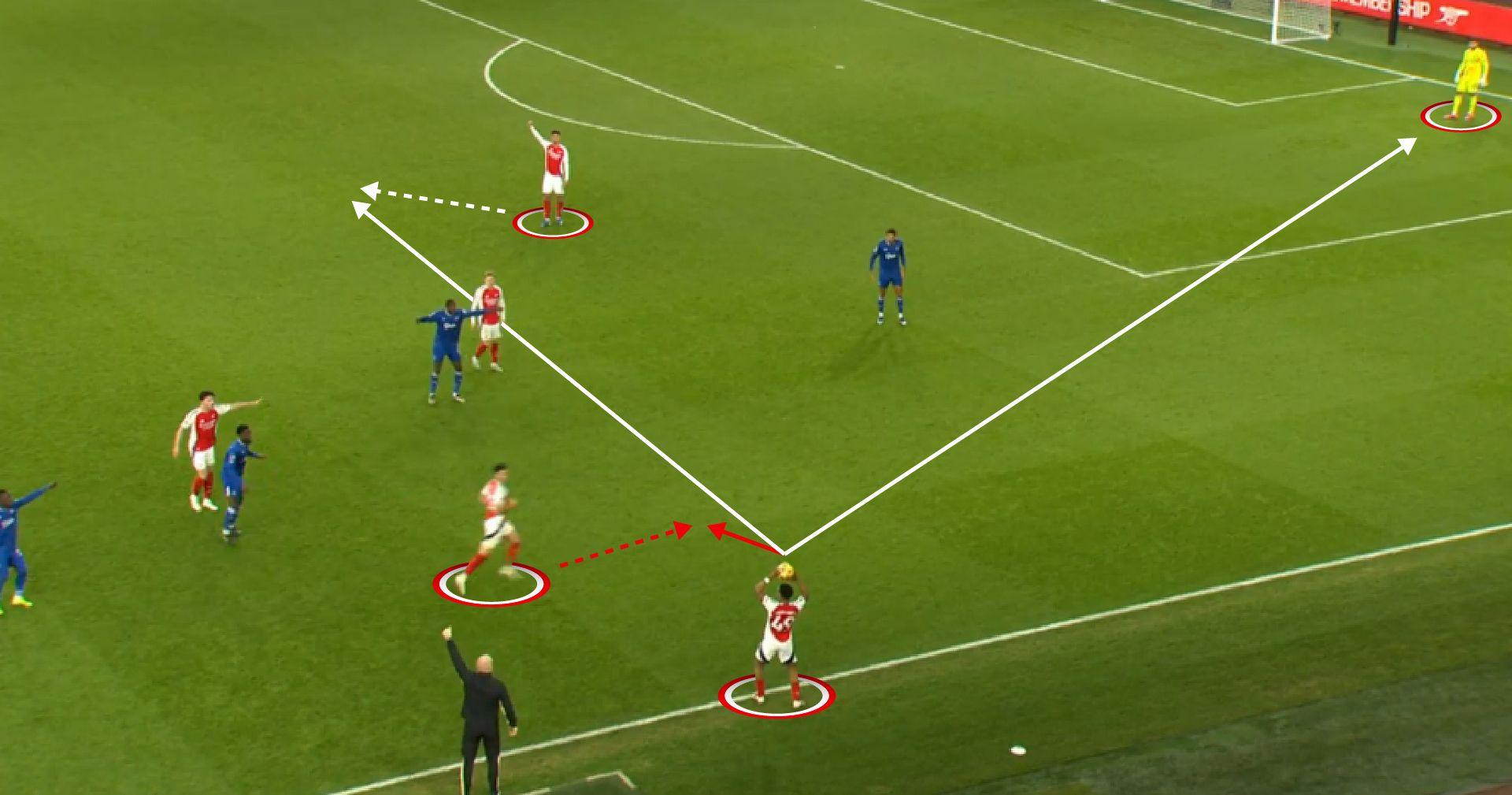Bring back the Delap delivery - how to make throw-ins a weapon

- Published
Anyone who watched Premier League football between 2008 and 2012 will remember Rory Delap's long throws for Stoke City.
The potency of the 'Delap special' - when he hurled the ball into the penalty area from the sidelines - filled opposing defences with dread.
However, bar that brief spell when Delap defined an era for Stoke, throw-ins have been one of football's untapped resources.
Delap showed what was possible. But there must be more tactical possibilities for a set-piece that operates outside both the offside and handball laws.
About 35 times every match an outfield player is allowed to throw the ball on to the pitch, often from a position only approximately close to where it went out of play. Oh, and - inexplicably - there are no offsides.
Perhaps their basic absurdity explains why throw-ins have slipped by almost unnoticed and untouched over the past century. It's as if they are such a bizarre outlier we don't quite register them as being part of football but rather adjacent to it, an awkward interlude before the real thing gets back under way.
Whatever the reason, it's noteworthy that the law around throw-ins hasn't changed since the 19th century, and neither - unlike pretty everything else in football, be it tactical or technical - has the look and feel of a throw-in scenario.
Here are five ideas of how throw-ins can be reinvented.
Learn Delap's technique and make it mainstream

Former Stoke player Rory Delap was renowned for his long throws
Delap's arrow-like long throws were iconic - and terrifying.
Defences struggled to cope with the speed and flat trajectory of his deliveries, so much so that Hull City goalkeeper Boaz Myhill once opted to kick the ball out for a corner to avoid conceding a throw-in.
Stoke scored 25 goals from Delap throw-ins in four years. It's a weapon every team could do with, and yet nobody has managed to replicate his throwing style.
Why not?
While Delap was a javelin thrower in his youth, which helped his unique delivery, there must be scope to train players to get close to the length and speed he was able to achieve with his throws.
Get a full-back in the gym, build up the arms muscles, their hip muscles, or whatever else is needed to specialise, and you could have a brand new weapon.
End long-throw snobbery - they are just like corners
It's time to end the snobbery. Thanks to Delap's role for Tony Pulis' Stoke, long throws are exclusively associated with direct, ugly, and defensive football.
We ought to question the logic of that. First of all, Arsenal are bringing set-piece reliance back into fashion (Mikel Arteta has previously taken comparisons to Pulis' Stoke as a "compliment") and set-piece coaches are all the rage right now.
More importantly, a long throw-in is no different from sending a corner straight into the box. Why are long corners seen as acceptable and long throws somehow regressive?
Again it comes back to the basic weirdness of throw-ins, their status as an after-thought. To maximise them is almost seen as bending the rules, or at least breaking the spirit of the law.
Delap briefly revolutionised the throw-in - but he only began to tap into its potential. There is room for so much more.
Repurpose corner routines - and reshape attacking throw-ins
Set-piece coaches have turned modern corners and free-kicks into American football-style set plays. Why not throw-ins?
There are countless corner strategies and counter-strategies out there, and yet so far this hasn't changed throw-in tactics, which remain oddly static and improvised.
Again, the lack of innovation is staggering compared with how much has changed in other departments.
And innovation isn't difficult to achieve - remove the snobbery, establish long throws as the norm (and the new corners), and set-piece plays can be transferred wholesale.
This comes with an added bonus. When opponents adapt and pack the box, short throw-ins will become like short corners, producing two-on-ones and a crossing situation.
Once the seal is broken, the possibilities are endless.
Beat the offside trap - and turn innocuous throw-ins into lethal ones
So far, we've only focused on finessing the long-throw technique.
But with the Delap-style trajectory, there is so much more that can be achieved beyond hurling the ball towards the goal.
The offside law is the bedrock of football. Without it, you could just hoof the ball up to the goal hangers.
The spaces would be so big that tactics would become redundant... which is more or less the case at every throw-in.
It's incredible that the offside law does not apply at goal kicks or throw-ins - even more so that clubs don't use this to their advantage.
We've seen Manchester City keeper Ederson exploit this on occasion, once famously assisting Sergio Aguero when he made a sneaky run around the back of the defensive line.
Why not from throw-ins? With one player hanging offside or several at once, teams could either force the opposition defensive line to drop much deeper (thus creating space in front) or simply go through on goal.
Here's an example, taken from Liverpool's 1-0 defeat by Paris St-Germain in the Champions League last 16:

What's noteworthy about the above image is the way Luis Diaz makes a 'normal' run down the wing, as if it hasn't occurred to him he can't be offside.
These kinds of situations repeat again and again, yet nobody thinks to goal hang.
Maybe that's fair enough if the long throw never comes. Just imagine what a Delap could do.
Take risks with cross-field throws
Those offside-trap-beating throw-ins can open our minds to visualising new ways to think outside the box - for a set-piece so often associated with being boxed in.
Throw-ins in your own third, or even on the halfway line, are often awkward. If the opposition chooses to get tight to the team in possession then the throw-in taker tends to launch a looping one down the line and hope for the best.
That's partly because throw-ins require a strange technique that, as we've covered, is under-practised.
It's also partly because nobody wants to take risks. Yet in an age of high-risk passing out from the back - a tactical trend specifically designed to lure the opponent forward, then break the press - it is surely time to change that.
Teams could practise cross-field long throws and line-splitting diagonals to break out, as we show in the following examples - all taken from Arsenal's 0-0 draw with Everton in December in which Arteta's side struggled to play with enough speed to work through the visitors.
In the third minute Martin Odegaard chooses to recycle the ball, but what would have happened if Gabriel Martinelli moved into that offside position, giving a long-thrower a line-splitting through ball?

Here, Myles Lewis-Skelly decides to play it safe (red arrow), but a long throw across the field to Bukayo Saka would break the game wide open:

Later in the half, with Everton sitting comfortably in their shape, Jurrien Timber stands for 13 seconds, unsure of what to do, before Declan Rice finally comes short.
Perhaps in future Timber could be trained to attempt an ambitious long throw to Martinelli (top right), or try to switch the play:

Even in their own half, Arsenal had better options. Lewis-Skelly takes a full 25 seconds to restart play here, eventually giving it Mikel Merino, who is forced to lump it down the line and concede possession. Again, players could be trained to take a risky long throw:

Why are these almost never seen? Throw-in technique is one reason, but another is a lack of imagination.
If this idea was to take off, the logical next step would be fully-fledged throw-in routines from anywhere on the pitch, complete with runs and decoy runs designed to pull opponents around.
We seem a long way off that in 2025. In 99% of cases the throw-in taker chucks it up the line or goes safe to a player a few yards away, who is then immediately boxed in.
The best case scenario, in an attacking situation, is a looping ball landing between the edge of the box and the penalty spot.
This surely cannot be the end point of the throw-in.
Someone, eventually, will pick up from where Pulis and Delap left off and put football's weird, cheat-code set-piece in the spotlight.
Related topics
- Published16 August
